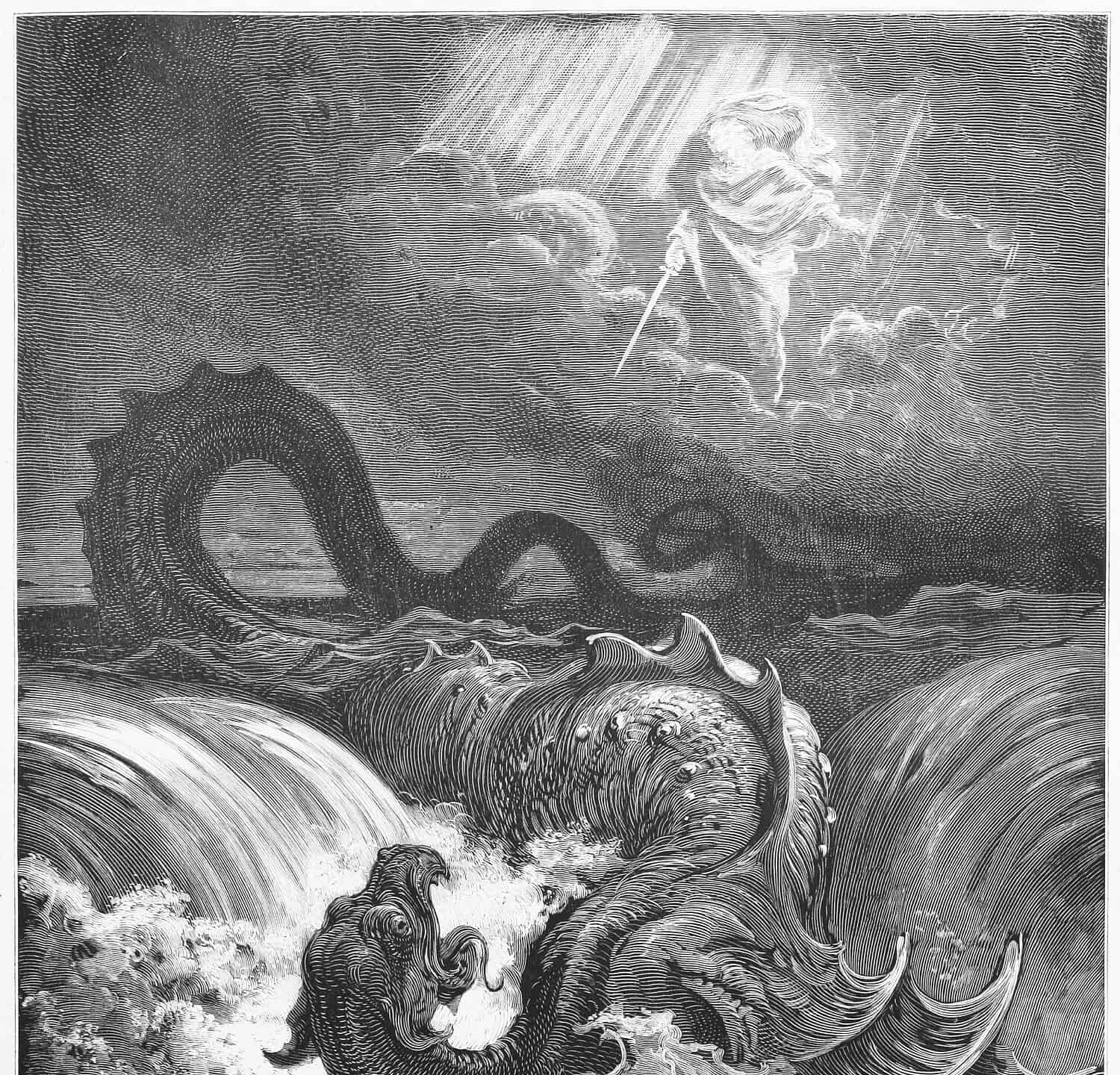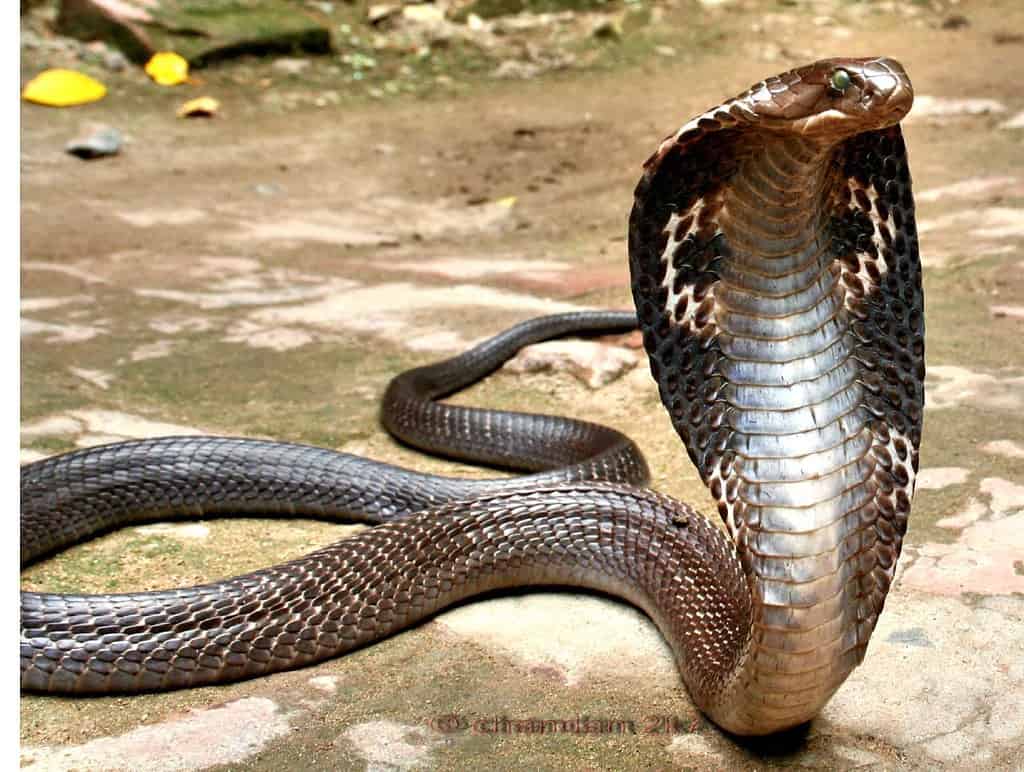Introduction
The Holy Bible is the sacred text of Christianity and Judaism. While Christianity includes both the New Testament and the Old Testament in its scriptures, Judaism focuses on the Old Testament. In addition, most descriptions of dinosaur-like creatures are found in the Old Testament. Therefore, both Judaism and Christianity can look to the Bible to determine whether dinosaurs existed during biblical times. Discover what the Bible says about dinosaurs and find out which books of the Bible discuss dinosaurs.

Some passages in the Bible may mention dinosaurs, but theologians still debate whether these references allude to dinosaurs or to other creatures.
©iStock.com/NoonVirachada
Does the Bible Mention Dinosaurs?
The Bible does not directly mention dinosaurs, as the term did not develop until the 19th century. The Greek word deinos, meaning “horrible,” combined with the Greek word sauros, meaning “lizard,” created the English word “dinosaur.” Paleontologist Sir Richard Owen is attributed with creating the term “dinosaur” from the original Greek, and he derived the term from the findings of other researchers.
While the Bible never mentions dinosaurs, it does make references to beasts that appear like dinosaurs. However, theologians and Christian scientists struggle to agree on whether the Bible references dinosaurs. Modern researchers have proven the existence of dinosaurs as fact, according to fossils, bones, carbon dating, and more. Nevertheless, the debate goes on over whether dinosaurs are a biblical truth.
What is a Dinosaur?
Dinosaurs are large reptiles believed to have first evolved around 245 million years ago. Most researchers agree that dinosaurs went extinct following the Cretaceous Period, but others think these beasts evolved into various bird types. The term “dinosaur” typically refers to large land-dwelling reptiles. However, some people also refer to giant reptiles in the sea and air as dinosaurs.

The Sauropod is a type of dinosaur that exhibits a long neck.
©thaloengsak/Shutterstock.com
Possible References to Dinosaurs in the Bible
The Bible often references dinosaur-like creatures by describing them as serpents, sea monsters, or dragons. The Hebrew term that defines these creatures is tannin, and it can be translated in several ways. Overall, though, most scholars agree that tannin describes a type of large reptile. The Bible mentions tannin numerous times in the Old Testament in books like Genesis, Job, and Psalms.
Behemoth and Leviathan
Perhaps the most striking illustration of dinosaur-like creatures in the Bible is found in Job. A creature called Behemoth is one example of a possible dinosaur in the Bible. Job 40 describes Behemoth as an herbivore that lives close to water. Supposedly, Behemoth is a massive, stiff creature with incredible strength and a large tail. Some theologians believe that Behemoth is a reference to an elephant or a hippopotamus. However, others argue that Behemoth is more like a dinosaur, specifically a Saltasaurus, a Brachiosaurus, or another type of giant reptile.
In addition, Leviathan is the second dinosaur-like creature found in Job. In Job 41, Leviathan is mentioned in detail, described as a sea monster through fishing imagery and diction. The words “fishhooks,” “harpoons,” and “fishing spears” indicate that Leviathan is a sea-dweller. Some theologians contend that Leviathan is a metaphorical representation of a crocodile, an animal we are familiar with today. However, other verses in Job 41 illustrate Leviathan as something much more fearsome, tamed only by God himself.
Moreover, Job 41 depicts Leviathan as a ferocious beast, rivaled by no other creature on Earth. The beast breathes fire, and no weapon of man can defeat it. In fact, Job depicts the creature as the strongest beast to have ever lived, much like a mythical dragon that takes down its enemies with fiery breath and unmatched violence. Leviathan parallels modern understandings of a dinosaur. Leviathan’s strength, ferocity, appearance, and behavior may classify it as an ancient dinosaur.

This image, called the Destruction of Leviathan, illustrates God’s power over the ferocious beast.
©Nicku/Shutterstock.com
Dinosaur Cross References in the Bible
In addition to the two dinosaur-like creatures in Job, other books mention giant lizards or reptiles. For instance, Psalm 74:13-14 praises God for crushing menacing sea monsters, including Leviathan. Psalm 104:26 also describes Leviathan, and the author discusses the creation of it. Moreover, Isaiah 27:1 prophesies a day in which God will kill the Leviathan, as referenced by Psalm 74.
A Closer Look at Tannin
As mentioned above, the word tannin most commonly refers to dragons, sea monsters, or serpents in the Bible, and these beasts usually parallel dinosaur descriptions. However, theologians interpret tannin in different ways.
Tannin: Mammal or Serpent?
For one, tannin could refer to a giant reptile, like Levithan, which most aligns with the description of a sea dragon, as opposed to a dinosaur. The plural use of tannin, though, is tanninim, which could refer to a group of jackals, an animal that still exists today. Tannim is the Hebrew word for jackal. Therefore, scholars skeptical of the existence of dinosaurs or dragons may argue that tanninim describes jackals alone.
The biblical evidence for dinosaur-like creatures is obvious, though, considering descriptions of Leviathan and Behemoth. According to a biblical worldview, it’s more likely that tanninim describes dinosaurs than jackals. In addition, some theology guides distinguish between tannin and tannim, pointing out how the words have different meanings and that jackals should not be equated to sea creatures.

The plural form of
tannin, being
tanninim, has been used to describe jackals.
©Wim Hoek/Shutterstock.com
Tannin in Creation
Furthermore, Genesis 1:21 illustrates the creation of animals in the sea and air. The term tanninim appears in this passage, too, and it refers to sea creatures. According to Genesis, God created sea animals on the fifth day of the creation narrative. On the sixth day, God created land animals. Considering that the jackal is a land animal, it makes little sense for the use of tanninim on the fifth day to refer to a jackal. Rather, tanninim must refer to sea creatures, as God formed sea animals on the fifth day according to the Bible.
However, the use of tanninim to describe sea creatures does not automatically point to the creation of dinosaurs, sea monsters, or Leviathan. Some scholars believe that tanninim refers to a broad definition of sea animals, including whales, sharks, and squid. Therefore, it’s possible that all sea creatures can be described by using tanninim.

According to the Bible, God created sea creatures on the fifth day of the creation narrative.
©F Photography R/Shutterstock.com
Tannin: A Kind of Serpent
Since tanninim can describe a variety of aquatic beasts or reptiles, the term takes different forms according to different books of the Bible. In Job, Psalms, and Isaiah, tannin refers to powerful, dinosaur-like beasts, such as Leviathan. In Exodus and Deuteronomy, though, tannin may refer to a type of snake or cobra. The rod that Aaron, the brother of Moses, throws down in front of Pharaoh in Exodus 7 becomes a tannin or serpent. Therefore, some scholars could argue that tannin solely describes a type of snake, rather than a dinosaur.
However, another Hebrew word defines a type of snake: nachash. Nachash illustrated the transformation of Moses’s staff into a snake in Exodus 4. Why did Aaron’s staff become a tannin in Exodus 7, as opposed to a nachash? Tannin may refer solely to cobras, a specific type of snake. This interpretation derives from other Bible passages, such as Psalm 91:13, which equates tannin to a cobra in some translations. Nachash, on the other hand, may refer to a variety of snakes.
If this is true, Aaron’s rod turned into a cobra while Moses’s rod turned into another type of snake. While experts still debate this interpretation, it could prove that tannin has multiple definitions, including cobras, sea monsters, Leviathan, and more.

The use of
tanninto describe Aaron’s staff in Exodus 7 may represent a cobra.
©Chandan Singh from India, CC BY 2.0 – License
Dinosaurs in the Bible: A Summary
Considering the use of tannin to describe various serpents, dragons, and sea monsters, it’s possible that dinosaurs existed during biblical times. Descriptions of Leviathan and Behemoth both point to the existence of dinosaurs, too. However, most scientists strictly define dinosaurs as land animals. Taking this definition into account, dinosaurs are not directly mentioned in the Bible unless the definition includes sea creatures.
The most vivid description of a dinosaur-like creature in the Bible is Leviathan, a sea-dwelling monster. Therefore, it’s certainly possible that dinosaurs are represented in these scriptures, but their biblical interpretation may be more like the Loch Ness Monster than a Tyrannosaurus rex.
The photo featured at the top of this post is © iStock.com/Kitti Kahotong
Thank you for reading! Have some feedback for us? Contact the AZ Animals editorial team.






